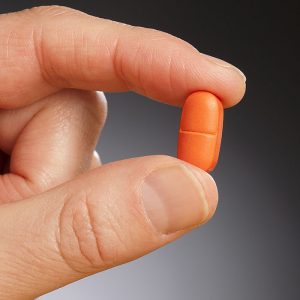
DOES DENTAL ANXIETY make it difficult for you to keep up with your regular dental appointments? Sedation dentistry could be the solution you’ve been looking for so that your teeth can get the professional care they need to stay healthy.
Does the thought of having your teeth cleaned make your entire body tense with fear? Would you rather endure the agony of a toothache than step foot in a dentist’s office? You’re not alone. A lot of people are so phobic about going to the dentist that they prefer not to have any treatment. We have many patients that are nervous when it comes time for them to come in for their appointment.
What Is Sedation Dentistry?
Sedation dentistry uses medication to help patients relax during dental procedures. It’s sometimes referred to as “sleep dentistry,” although that’s not entirely accurate. Patients are usually awake with the exception of those who are under general anesthesia.
Sedation is most appropriate for people with a real fear or anxiety that is preventing them from going to the dentist.
Sedation dentistry may also be appropriate for people who:
- have a low pain threshold
- have a hard time staying still in the dentist’s chair
- have very sensitive teeth
- have a bad gag reflex
- require a large amount of dental work to be completed at one time
What Types of Sedation Are Used in Dentistry?
The following types of sedation are used in dentistry:
- Inhaled minimal sedation. You breathe Nitrous Oxide — otherwise known as “laughing gas” — combined with oxygen through a mask that’s placed over your nose. The gas helps you relax. Your dentist can control the amount of sedation you receive, and the gas tends to wear off quickly. This is the only form of sedation where you may be able to drive yourself home after the procedure. We use Nitrous Oxide for restorations, root canals and other procedures completed by the dentist.
- Oral sedation. Depending on the total dose given, oral sedation can range from minimal to moderate. For minimal sedation, you take a pill. Typically, the pill is Halcion, which is a member of the same drug family as Valium, and it’s usually taken about an hour before the procedure. The pill will make you drowsy, although you’ll still be awake. A larger dose may be given to produce moderate sedation. This is the type of anesthesia most commonly associated with sedation dentistry. Some people become groggy enough from moderate oral sedation to actually fall asleep during the procedure. They usually can, though, be awakened with a gentle shake. We can use this medication for your hygiene visit and any treatment completed by the dentist.
- IV moderate sedation. You receive the sedative drug through a vein, so it goes to work more quickly. This method allows the dentist to continually adjust the level of sedation. This method is used sometimes with patients with severe anxiety or longer procedures and children. When patients need to get their wisdom teeth removed, the dental surgeon may use IV sedation.
- Deep sedation and general anesthesia. You will get medications that will make you either almost unconscious or totally unconscious — deeply asleep — during the procedure. While you are under general anesthesia, you cannot easily be awakened until the effects of the anesthesia wear off or are reversed with medication. This method is used again for sever anxiety and longer procedures.
- Regardless of which type of sedation you receive, you’ll also typically need a local anesthetic — numbing medication at the site where the dentist is working in the mouth — to relieve pain if the procedure causes any discomfort. We commonly use this when patients are here for their hygiene visit.
Our Practice’s Sedation Dentistry Options
At Queenston Dental, we use inhaled minimal sedation and oral sedation. Dr Mark and Dr. Kristjan use Nitrous Oxide on their patients that seem to have some anxiety and it does help. We commonly use with with children as well. Dr. Nick, Dr. Mark and Dr. Kristjan can write you a prescription for oral sedation to use in our office. We do have many patients that prefer to use this method. They always have someone with them to drive them to and from their appointment.
Are You A Candidate For Sedation Dentistry?
Some patients that are currently on medication may not be able to take oral sedation due to complications. Not every medication can’t be mixed with sedation, but some can’t. It’s extremely important that you tell your dentist about every medication you take. This includes prescribed medication, over-the-counter medication, vitamins, or herbal remedies. If you don’t, your dentist may prescribe oral sedation that won’t work or could have negative side effects when mixed with your current medication
If you suffer from chronic bronchitis or respiratory disease, oral sedation is not recommended for you. The medication typically prescribed slows breathing, in an effort to relax you. This is good if your lungs are completely healthy, but when they’re compromised, this can cause complications.
In oral and IV sedation, benzodiazepines are the most common medication, although others are available instead. Patients with allergies to the typical medication may be able to use an alternative but they may not, depending on other underlying conditions. Share any allergies you have with your dentist.
Dental sedation is not recommended for pregnant women at nearly every stage. Nitrous Oxide is not used in the first trimester while oral and IV sedation are not recommended at any point during the pregnancy. If you think you could be pregnant, even if you’re not sure yet, make sure to tell your dentist.
Bring Us Your Questions About Sedation Dentistry
Your days of staying away from the dentist’s office because of dental anxiety or fear are over! With our practice’s sedation dentistry options, you can be comfortable and relaxed while we take care of your teeth and gums. If you have any questions about sedation dentistry, just give us a call and we’ll be glad to answer them.
We want every patient to feel comfortable in our practice!
Top image by Flickr user Oregon State University used under Creative Commons Attribution-Sharealike 4.0 license. Image cropped and modified from original. The content on this blog is not intended to be a substitute for professional medical advice, diagnosis, or treatment. Always seek the advice of qualified health providers with questions you may have regarding medical conditions.
